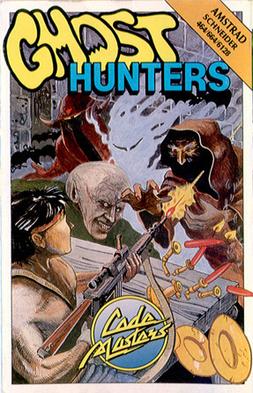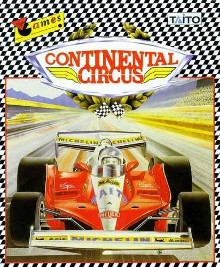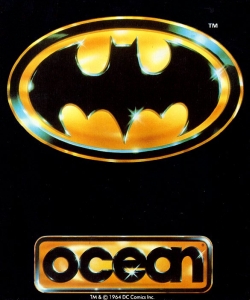
The ZX Spectrum is an 8-bit home computer developed and marketed by Sinclair Research. Considered one of the most influential computers ever made, it is also one of the best-selling British computers ever, with over five million units sold. It was released in the United Kingdom on 23 April 1982, and around the world in the following years, most notably in Europe, the United States, and Eastern Bloc countries.

Operation Wolf is a light gun shooter arcade game developed by Taito and released in 1987. It was ported to many home systems.

Operation Thunderbolt is a light gun shooter video game developed by Taito and released for arcades in 1988. As the sequel to Operation Wolf, changes include two-player gameplay with two positional gun controllers mounted on the arcade cabinet, and a new forward-scrolling pseudo-3D perspective combined with side-scrolling sections.

Laser Squad is a turn-based tactics video game, originally released for the ZX Spectrum and later for the Commodore 64, Amstrad CPC, MSX, Amiga, Sharp MZ-800 and Atari ST and PC computers between 1988 and 1992. It was designed by Julian Gollop and his team at Target Games and published by Blade Software, expanding on the ideas applied in their earlier Rebelstar series. Laser Squad originally came with five mission scenarios, with an expansion pack released for the 8-bit versions, containing a further two scenarios.

Ghost Hunters is a platform game written by the Oliver twins for the Amstrad CPC and published by Codemasters in January 1987. It was also converted and released for the ZX Spectrum (1987) and Commodore 64 (1989) platforms. The game combines platform-style action with shooting gameplay similar to that found in the game Operation Wolf. It was conceived as a sequel to Super Robin Hood, although it has little to do with this game other than using a modified version of its engine. The twins have credited the film Ghostbusters and the cartoon series Scooby-Doo for influencing the game.

Continental Circus is a racing arcade video game, manufactured by Taito in 1987. In 1989, ports for the Amiga, Amstrad CPC, Atari ST, Commodore 64, MSX, and ZX Spectrum were published by Virgin Games.

The Powerplay Cruiser was a joystick released in 1986, during the time that the Atari ST, ZX Spectrum, Commodore 64 and Commodore Amiga were all popular home computers. It was compatible with many 8-bit and 16-bit machines, and boasted many features that were considered high end at the time:

Cybernoid: The Fighting Machine is a shoot 'em up developed and published in 1988 by Hewson Consultants for the ZX Spectrum. It was ported to the Amstrad CPC, Atari ST, Commodore 64, Amiga, and Nintendo Entertainment System. It was programmed by Raffaele Cecco. The ZX Spectrum, Amstrad, and Atari ST versions have a main theme by Dave Rogers, while the Commodore C64 version has a different theme by Jeroen Tel.

Rambo III is a series of video games based on the film Rambo III (1988). Like in the film, their main plots center on former Vietnam-era Green Beret John Rambo being recalled up to duty one last time to rescue his former commander, Colonel Sam Trautman, who was captured during a covert operation mission in Soviet-controlled Afghanistan. Taito released an arcade video game based on the film. The console versions were developed and published by Sega, the IBM PC compatible version was developed by Ocean and published by Taito, and Ocean developed and published the other home computer versions: Atari ST, Amiga, Spectrum, C64, Amstrad CPC.
Crystal Computing, later renamed Design Design, was a British video game developer founded in 1982 by Chris Clarke and Ian Stamp while students at the University of Manchester. Graham Stafford, Neil Mottershead, Simon Brattel and Martin Horsley, joined the company as it expanded. The company's first software release was a compilation of games for the Sinclair ZX81, though it was with the ZX Spectrum that Crystal found its greatest success. A deal with the machine's manufacturer Sinclair to distribute Crystal's Zeus Assembler gave the company sufficient funds for a major marketing campaign for their next product, Halls of the Things, an arcade adventure game that became their most successful title.

Myth: History in the Making is a 2D platform game developed and published by British publishing house System 3 for the Commodore 64, Amiga, Amiga CD32, Amstrad CPC and ZX Spectrum. It was also released on the NES as Conan: The Mysteries of Time. It was officially announced for Atari ST and a preview version was available, but the full version was never released.

A View to a Kill are two separate video games released in 1985 and based on the James Bond film A View to a Kill. The first, an action game titled A View to a Kill: The Computer Game, was developed and published by Domark. It was available for the ZX Spectrum, Amstrad CPC, Commodore 64, MSX, and Oric. The second game, James Bond 007: A View to a Kill, is a text-based adventure for MS-DOS, Macintosh, and Apple II. It was developed by Angelsoft, and published by Mindscape.

Action Force: International Heroes is a video game released by Virgin Games in 1987 for the ZX Spectrum and Commodore 64, and in 1988 for the Amstrad CPC. The game is set in the world of the Action Force toys by Hasbro. The ZX Spectrum version of the game differs notably from the Commodore and Amstrad versions.

Zub is a 1986 platform video game designed by Ste and John Pickford, developed by Binary Design, and published by Mastertronic for the Amstrad CPC, Commodore 64 and ZX Spectrum. The game has the player control Zub, who has to travel to different planets to retrieve the Green Eyeball of Zub. A parody of the game Light Force, called Lightfarce, was added in as an easter egg. The music on all computers was composed by David Whittaker.

The Living Daylights is a run and gun video game adaptation of the 1987 James Bond film The Living Daylights. It was the second Bond game published by Domark following 1985's poorly received A View to a Kill: The Computer Game.

James Bond: The Spy Who Loved Me is a video game adaptation of the 1977 James Bond film The Spy Who Loved Me. The game was released for the Amiga, Atari ST, Amstrad CPC, Commodore 64, DOS computers, and ZX Spectrum in 1990.

Light Force is a 1986 vertically scrolling shooter designed by Greg Follis and Roy Carter, developed by their company Gargoyle Games, and published under their Faster Than Light imprint. It was released for the Amstrad CPC, Commodore 64, and ZX Spectrum platforms.

Batman is an action video game developed and published by Ocean Software based on the 1989 film of the same name. It was released on 11 September 1989 for the Commodore 64 and ZX Spectrum with Amiga, Amstrad CPC, Atari ST, MS-DOS and MSX versions following soon after.

Ace is a combat flight simulator video game published for the Commodore 64, VIC-20, and Plus/4 in 1985 by Cascade Games. It was ported to the Amstrad CPC, Amstrad PCW, Amiga, and ZX Spectrum.

The Race Against Time is a 1988 adventure video game designed by the Oliver Twins, and developed and published by Codemasters. The player controls Sudanese runner Omar Khalifa, who has to venture to six continents to light torch bowls and raise flags to begin the 1988 Sport Aid, a sport-themed charity organization. A tie-in to the Sport Aid charity, all proceeds were donated to the campaign. The game was released for the Amstrad CPC, Commodore 64, and ZX Spectrum platforms.




















